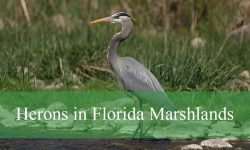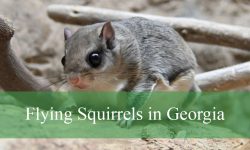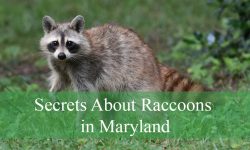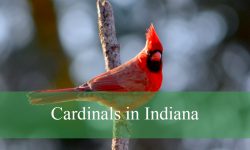Colorado’s diverse landscapes from towering mountains to open plains create a perfect home for a vibrant variety of birds. Each species adds its own melody and color to this stunning natural canvas.
Whether wandering through forests or along peaceful lakeshores you will encounter familiar feathered friends from swift swallows to cheerful songbirds. These moments bring you closer to the beauty of the outdoors.
In this article we will explore 43 common birds you are likely to see in Colorado. With vivid pictures and identification tips you will be ready to spot and appreciate these amazing creatures on your next outing.
Types of Birds Found in Colorado
European Starling
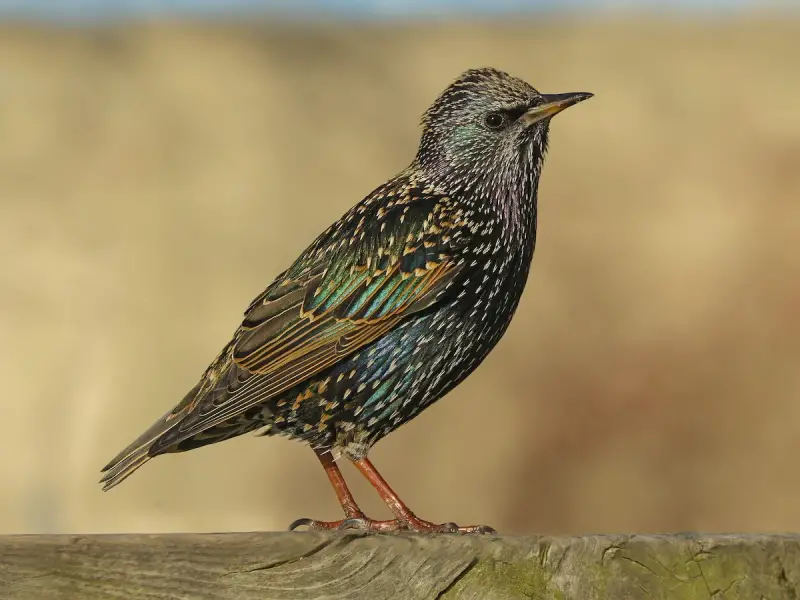
The European Starling is a medium-sized songbird that has become widespread across Colorado. In breeding plumage, it appears glossy black with iridescent purple and green tones, while its winter feathers are speckled with white spots. It has a sharp yellow bill in summer that turns dark during the colder months.
Measuring around 7.5 to 9 inches in length with a wingspan of about 12 to 16 inches, starlings are highly social and often seen in noisy flocks. They walk rather than hop on the ground and have a varied, musical song that includes mimicry of other birds and sounds.
European Starlings eat insects, fruits, seeds, and grains. They thrive in urban areas, farmlands, and open woodlands, often nesting in building cavities or tree holes. In Colorado, they are present year-round and are known for their aggressive behavior toward native birds at feeders and nesting sites.
American Robin
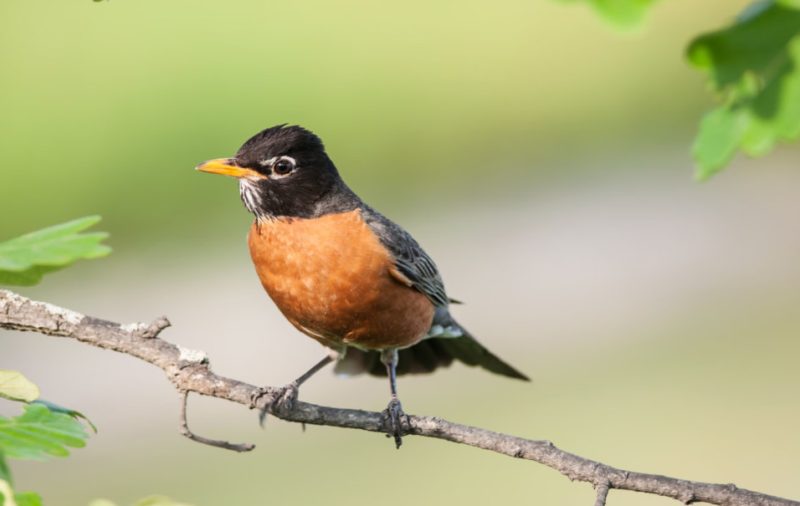
The American Robin is a familiar sight across Colorado, especially in suburban yards, open woodlands, and city parks. It has a plump, rounded body with a bright orange-red breast, dark gray upperparts, and a white lower belly. The head is black in males and grayish in females, with a broken white eye ring that adds to its distinctive appearance.
This bird typically measures around 9 to 11 inches in length and has a wingspan of 12 to 16 inches. Its song is a rich, melodic warble often heard during early mornings and late afternoons, especially in spring and summer. The American Robin is known for its upright stance and ground-hopping gait when foraging.
Robins primarily feed on earthworms, insects, and a wide variety of fruits and berries. They are highly adaptable and can thrive in gardens, golf courses, and even mountain meadows. In Colorado, they are year-round residents in milder regions and summer breeders in higher elevations.
Black-capped Chickadee

The Black-capped Chickadee is a small, energetic bird known for its curiosity and cheerful demeanor. It has a black cap and bib, white cheeks, soft gray back, and pale underparts that make it easy to identify. Its short neck and large head give it a distinctly rounded appearance.
Measuring only about 4.5 to 5.5 inches long with a wingspan of 6 to 8 inches, this tiny bird is often seen flitting through shrubs and tree branches. It has a distinctive “chick-a-dee-dee-dee” call and a whistled “fee-bee” song that is especially prominent during the breeding season.
In Colorado, the Black-capped Chickadee is commonly found in deciduous and mixed forests, especially near water sources. It feeds on seeds, insects, and spiders, often storing food in bark crevices or under leaves for later consumption during colder months. These birds are regular visitors at backyard feeders.
Northern Flicker

The Northern Flicker is a striking type of woodpecker often seen across Colorado, especially in open woodlands, parks, and suburban areas. It has a brownish body with black spots on the belly, a black crescent on the chest, and a white rump that is visible during flight. The western form found in Colorado, called the “Red-shafted” Flicker, shows reddish underwings and a red mustache mark in males.
It is a fairly large woodpecker, measuring about 11 to 14 inches in length, with a wingspan of around 16 to 20 inches. Unlike many woodpeckers, Northern Flickers are frequently seen foraging on the ground, where they use their long, slightly curved bills to dig for ants and beetles.
These birds nest in tree cavities and are attracted to wooded edges and open spaces. They eat mainly insects, but also consume berries and seeds, particularly during winter. In Colorado, they are common residents, and their loud, repeated “wick-a-wick-a-wick” call can often be heard echoing through forests and neighborhoods.
House Finch
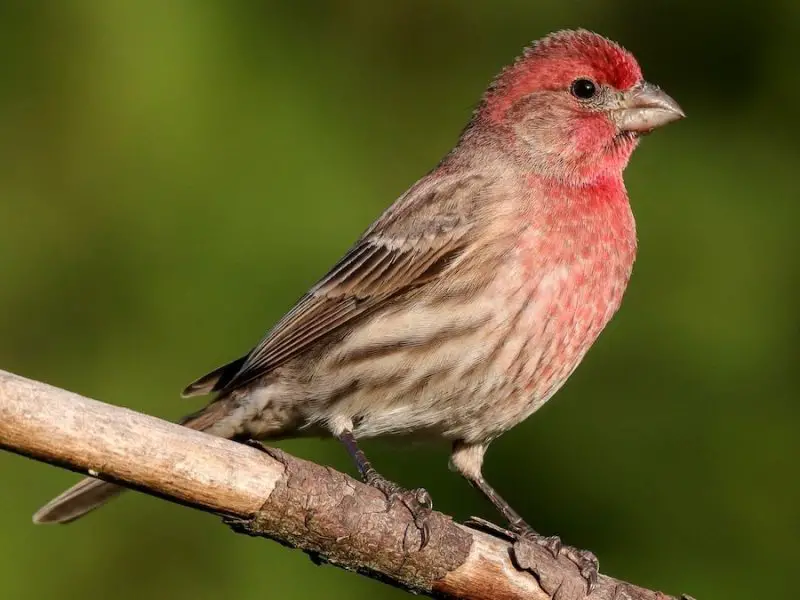
The House Finch is a small, sociable bird that thrives in urban, suburban, and rural environments throughout Colorado. Males have a rosy red forehead, chest, and rump, while females are streaked brown and lack the red coloration. Both sexes have a short, conical bill and a notched tail.
They typically measure around 5 to 6 inches in length, with a wingspan of 8 to 10 inches. House Finches often form flocks and are commonly seen perching on wires or visiting backyard feeders. Their song is a cheerful, warbling tune made up of long, jumbled notes.
House Finches primarily eat seeds, grains, and fruits. They are frequent visitors to bird feeders stocked with sunflower or millet seeds. They nest in a variety of locations, including hanging planters, building ledges, and conifer branches. In Colorado, they are widespread year-round residents, especially in residential areas.
Mourning Dove

The Mourning Dove is a graceful, slender bird with a soft grayish-tan body, long pointed tail with white edges, and subtle black spots on the wings. Its head is small, with a delicate black beak and dark eyes bordered by a pale blue ring. This species is named for its haunting, mournful cooing call.
It measures about 9 to 13 inches in length and has a wingspan of 17 to 18 inches. When taking flight, Mourning Doves produce a distinctive whistling sound with their wings. They often perch on telephone wires or forage for seeds on the ground, moving with smooth, gliding steps.
Mourning Doves feed mostly on seeds, making up over 90% of their diet. They prefer open habitats such as grasslands, agricultural fields, and suburban gardens. In Colorado, they are common across the state and breed during the warmer months, often raising multiple broods in a single season.
Dark-eyed Junco
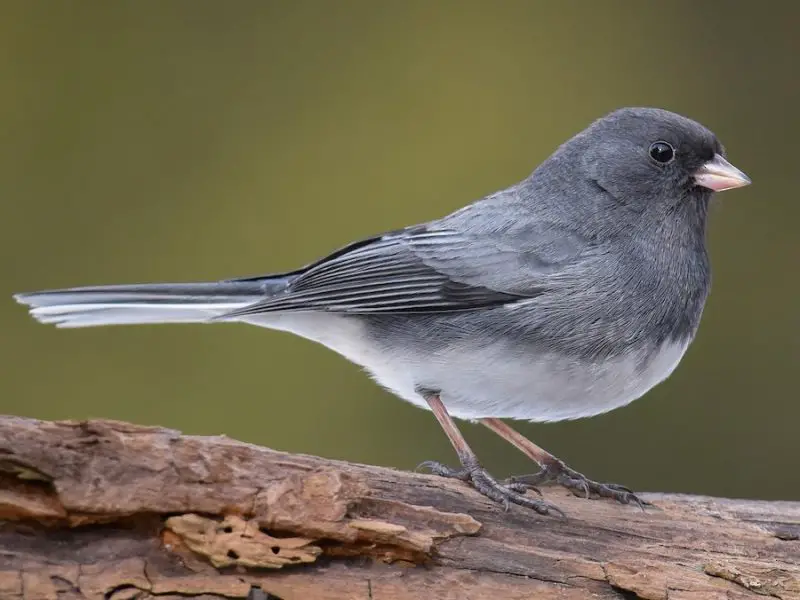
The Dark-eyed Junco is a small, sparrow-like bird widely seen across Colorado, especially during the winter months. It has a rounded head, a short pink bill, and a long tail with white outer feathers that flash during flight. The most common variety in Colorado is the “slate-colored” form, with a dark gray body and pale belly, though other regional forms may also appear.
Juncos measure about 5 to 6.5 inches in length with a wingspan of 7 to 10 inches. They are often observed hopping on the ground in flocks, especially under feeders or among leaf litter. Their soft trilling songs and tick-like contact calls are commonly heard in forests and residential areas.
These birds feed mainly on seeds, especially from grasses and weeds, but also eat small insects in the breeding season. In Colorado, they prefer forested mountain habitats during summer and move into lower elevations, towns, and open areas during winter. Their adaptability and numbers make them a familiar sight during cold months.
American Goldfinch
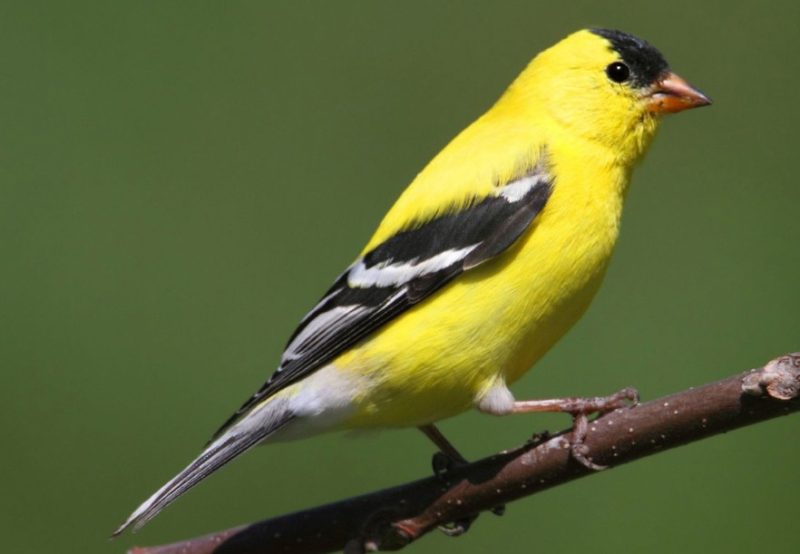
The American Goldfinch is a vibrant, small finch commonly found in Colorado’s weedy fields, gardens, and open woodlands. Males are striking in summer with bright yellow bodies, black caps, wings, and tails, while females are duller yellow-brown with less contrast. Both sexes turn olive-brown in winter with subtle yellow hints.
They range from 4.5 to 5 inches long with a wingspan of 7.5 to 8.5 inches. Their bouncy, undulating flight and high-pitched “po-ta-to-chip” call make them easy to spot in flight. Goldfinches are one of the latest nesters in the bird world, often waiting until mid-to-late summer when thistle seeds are plentiful.
Their diet consists almost entirely of seeds, particularly from thistles, sunflowers, and dandelions. They frequent backyard feeders stocked with nyjer or sunflower seeds. In Colorado, they are year-round residents at lower elevations and more common in summer in mountainous regions.
Red-winged Blackbird
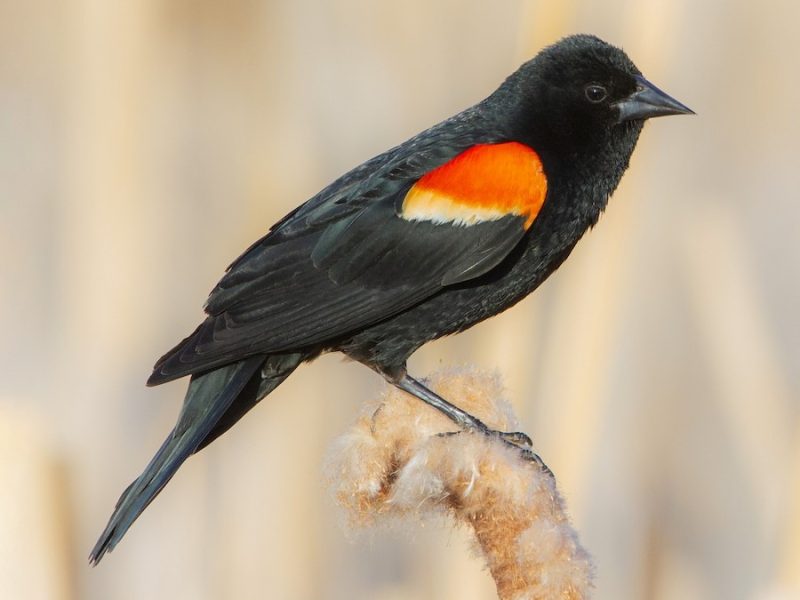
The Red-winged Blackbird is one of the most recognizable birds in Colorado’s wetlands, marshes, and grassy fields. Males are glossy black with bright red and yellow shoulder patches, while females are streaky brown and resemble large sparrows. Their sharp bill and conical head are notable features.
They measure about 6.5 to 9 inches in length, with a wingspan of 12 to 16 inches. Males perch on cattails or fence posts, loudly singing their signature “conk-la-ree” song to defend territory and attract mates. Females tend to stay hidden among reeds and grasses during nesting season.
These birds feed on insects during breeding season and switch to seeds and grains in colder months. In Colorado, they are especially abundant in spring and summer, nesting near ponds, lakes, and irrigation ditches. Large flocks often form in fall and winter, sometimes mixing with other blackbirds and starlings.
Blue Jay
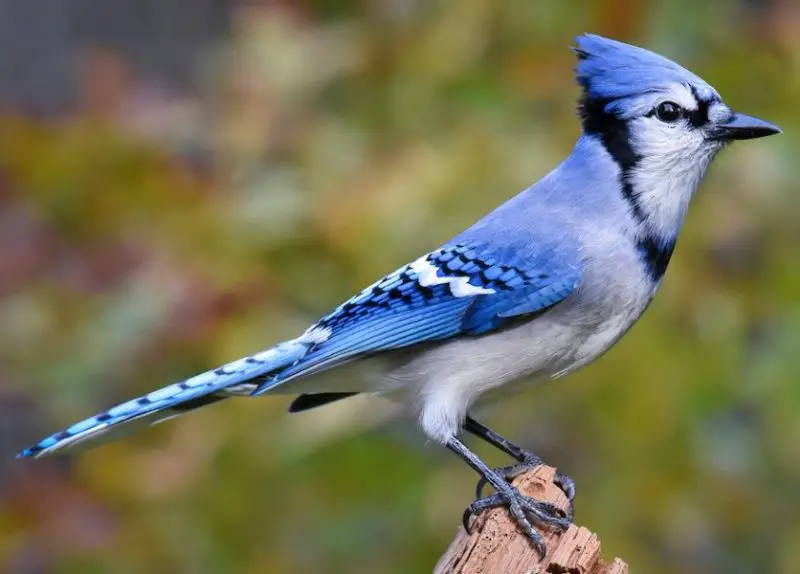
The Blue Jay is a bold and intelligent bird found in wooded areas, suburbs, and parks across eastern Colorado. It features bright blue upperparts, a white face and underbelly, and a black necklace across the throat. Its crest, expressive eyes, and loud calls make it easy to identify and hear.
Blue Jays measure about 9 to 12 inches in length and have a wingspan of 13 to 17 inches. They are known for their loud “jay-jay” calls, mimicry of hawks, and complex social behaviors. These birds often travel in noisy family groups and cache food for later use.
They eat a varied diet of seeds, acorns, insects, fruits, and occasionally bird eggs or nestlings. Blue Jays are common in oak forests and residential areas with mature trees. In Colorado, they are primarily found in the eastern plains and along riparian corridors, where they are year-round residents.
House Sparrow
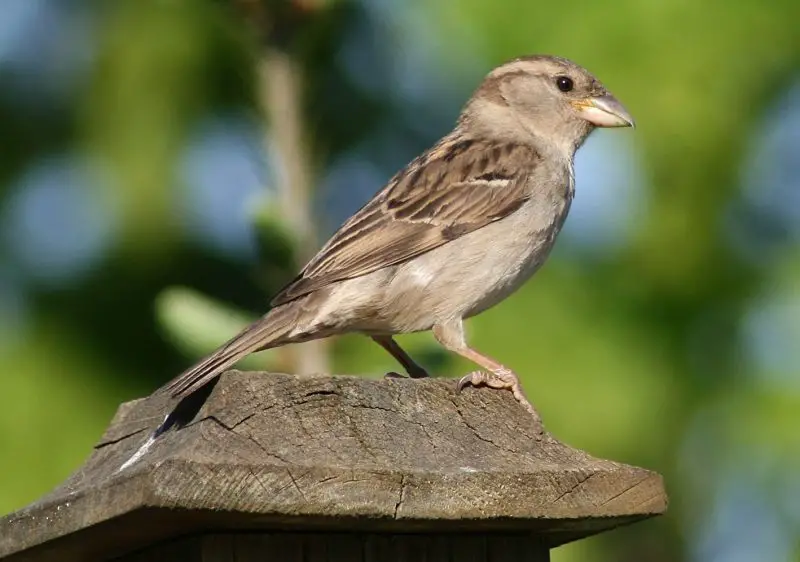
The House Sparrow is a small, chunky bird that has adapted exceptionally well to urban and suburban environments throughout Colorado. Males have gray heads, black bibs, chestnut napes, and brown backs with black streaks, while females are more subdued with buffy-brown tones and a pale eyebrow stripe. Their stout, conical bills make them easy to identify among backyard birds.
Measuring around 6 to 6.5 inches in length with a wingspan of about 8 to 9.5 inches, House Sparrows are often seen in noisy flocks around buildings, parking lots, and gardens. They chirp constantly, and their short, repetitive calls are common in cities and towns.
House Sparrows feed on grains, seeds, and food scraps, often scavenging around human activity. They nest in eaves, vents, and crevices in buildings. In Colorado, they are non-native but extremely widespread year-round, especially in areas with dense human populations.
Song Sparrow
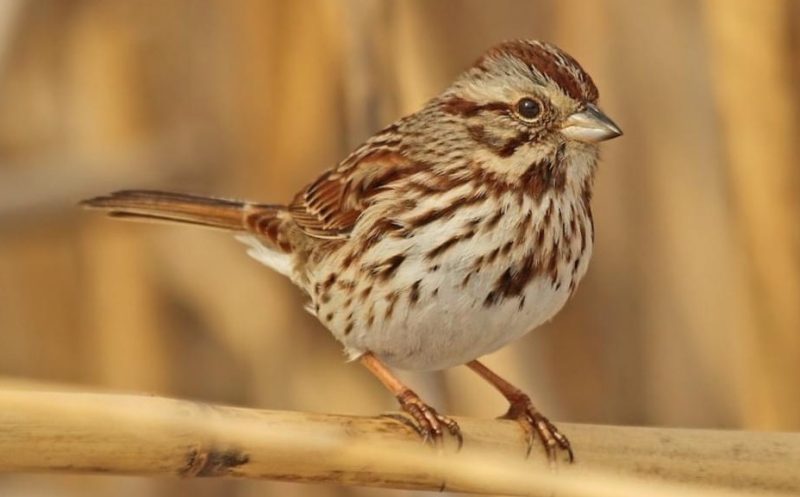
The Song Sparrow is a medium-sized sparrow known for its melodious, complex song and streaked appearance. It has a brown-streaked back, white chest with central dark streaks, and a rounded head with a grayish face and brown eye stripe. The thick streaks often form a dark spot in the center of the breast.
They measure about 5 to 6.5 inches long with a wingspan of 7.5 to 9 inches. Song Sparrows often perch on shrubs or low branches to sing, especially near water. Their varied, sweet song can be heard throughout the breeding season and helps distinguish them from other sparrows.
Their diet includes insects, seeds, and small fruits. In Colorado, Song Sparrows are found along streams, wetlands, marsh edges, and brushy fields. They breed at various elevations and are year-round residents in many lower elevation regions, especially where water is nearby.
Barn Swallow
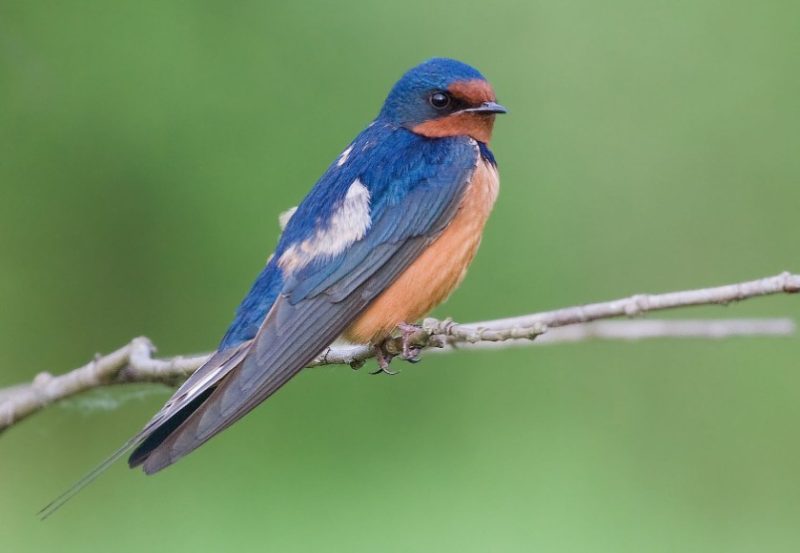
The Barn Swallow is a graceful, fast-flying bird easily recognized by its long, deeply forked tail and sleek body. It has a dark blue back, cinnamon-colored underparts, and a rich chestnut forehead and throat. Its swift, acrobatic flight and constant movement set it apart from other birds.
These swallows measure about 5.5 to 7 inches in length and have a wingspan of 11 to 13 inches. They are often seen swooping low over fields, ponds, and pastures as they hunt insects in flight. Their cheerful twittering calls and rapid wingbeats are commonly observed near barns and bridges.
Barn Swallows feed entirely on flying insects, including flies, beetles, and moths. In Colorado, they are summer residents, nesting in human-made structures like barns, sheds, and culverts. Their mud-cup nests are often built under eaves or rafters, and they return to the same sites each year.
Killdeer
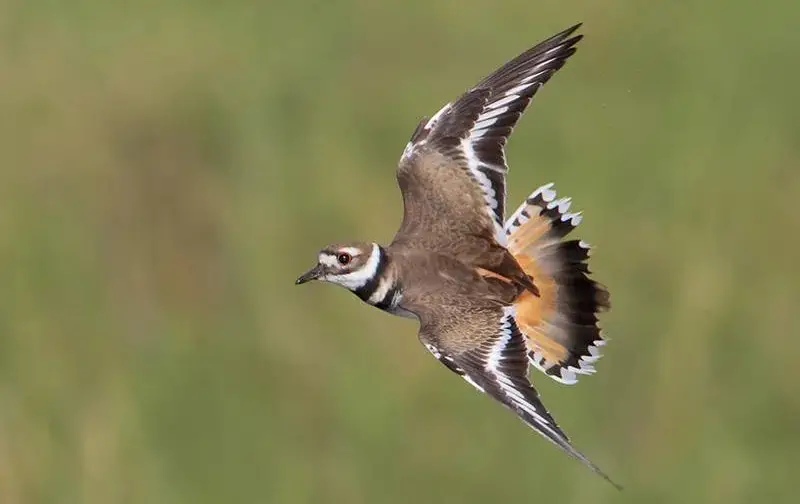
The Killdeer is a large, slender plover commonly found in open areas across Colorado, including grasslands, gravel roads, farmlands, and even parking lots. It has a brown back, white belly, and two distinct black bands across its chest. The bright orange rump and upper tail coverts are visible in flight and during its dramatic distraction displays.
Killdeer measure about 8 to 11 inches in length with a wingspan of 18 to 19 inches. Their high-pitched, repeated “kill-deer” call gives them their name and is often heard as they fly overhead or patrol open spaces. They are known for their broken-wing act to lure predators away from nests.
Their diet consists mainly of insects, worms, and small invertebrates, which they forage by running and pausing across open ground. In Colorado, Killdeer are common spring through fall and can also overwinter in milder southern areas. They often nest directly on gravel or bare soil with minimal concealment.
Western Meadowlark

The Western Meadowlark is a striking grassland bird known for its bright yellow breast, bold black “V” necklace, and flutelike song. Its back is brown with black streaks, helping it blend into open fields and prairies. It has a long, slender bill and white outer tail feathers that are visible during flight.
They measure about 6.5 to 10 inches long, with a wingspan of 16 inches. These birds are often seen perched on fence posts or shrubs, singing a clear, whistled tune that echoes across the plains. Their song is one of the most iconic sounds of the American West.
Western Meadowlarks feed on insects such as beetles, caterpillars, and grasshoppers, as well as seeds and grains. In Colorado, they are widespread in open areas, farmlands, and grasslands. They nest on the ground and are especially abundant during the spring and summer breeding season.
American Crow
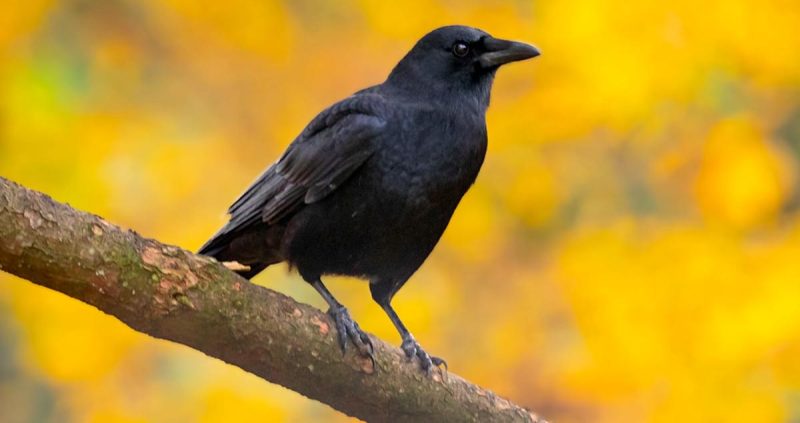
The American Crow is a large, all-black bird with glossy feathers, a stout bill, and strong legs. It has a fan-shaped tail and broad wings that make it a powerful flier. Its eyes are dark and its plumage shows iridescent purples and greens in sunlight, giving it a sleek, striking appearance.
It measures about 16 to 21 inches in length with a wingspan of 33 to 39 inches. Crows are highly intelligent and social, often seen in small groups or large flocks. Their loud, cawing calls are familiar sounds in fields, towns, and forests across Colorado, and they often display complex behaviors like tool use and problem-solving.
American Crows are omnivores, feeding on insects, small animals, carrion, seeds, and garbage. In Colorado, they thrive in various habitats including agricultural lands, urban parks, woodlands, and river valleys. They are year-round residents, often roosting communally in large numbers during winter.
Rock Pigeon
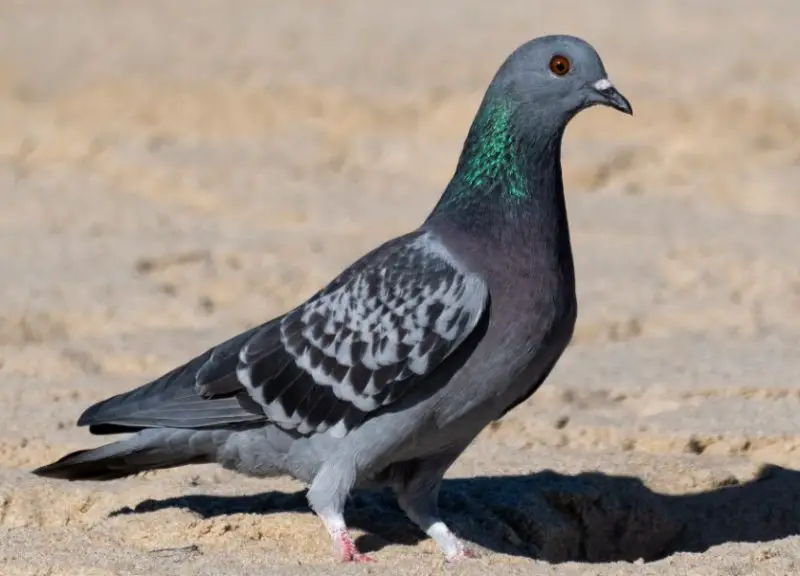
The Rock Pigeon, also known as the common city pigeon, is a medium-sized bird often found in urban environments throughout Colorado. It has a plump body, short neck, and small head. Plumage varies widely, but most individuals have blue-gray feathers with iridescent green and purple on the neck and two dark wing bars.
These pigeons are around 11 to 13 inches long with a wingspan of 20 to 26 inches. They walk with a head-bobbing motion and are often seen in flocks on sidewalks, rooftops, and city squares. Their cooing calls are soft but persistent, especially near nesting areas.
Rock Pigeons feed primarily on seeds, grains, bread crumbs, and other food scraps. They nest on building ledges, bridges, and other structures, often reusing the same nesting sites for years. In Colorado, they are non-native but extremely common and widespread year-round in towns and cities.
Western Bluebird
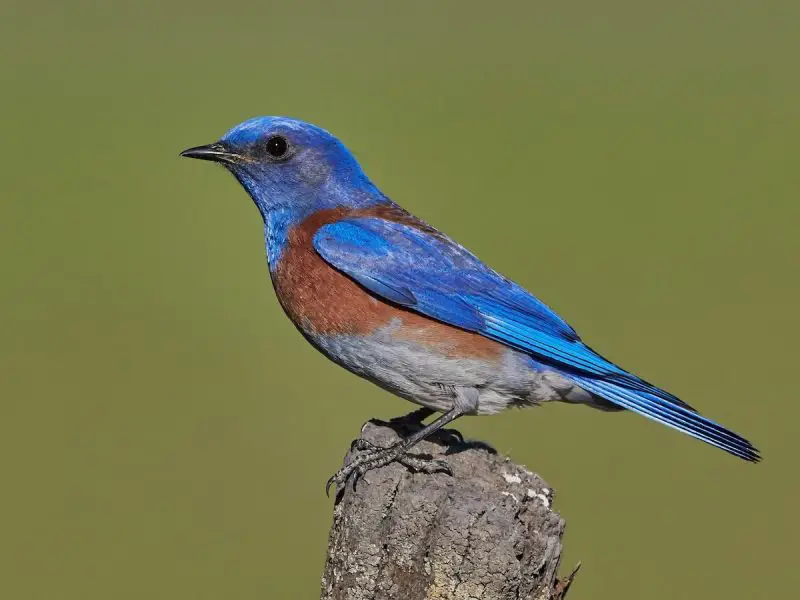
The Western Bluebird is a small, colorful thrush with bright blue plumage and a rusty-orange chest. Males are more vividly colored, while females are paler with grayish-blue tones. The bird has a short, thin bill and a compact, upright posture that makes it easy to identify in open country.
Western Bluebirds are 6 to 7 inches long with a wingspan of 11 to 13 inches. They are often seen perched on fences or low branches, scanning for insects. Their gentle, warbled calls and trills are a familiar sound in open woodlands and pastures.
These bluebirds eat insects during spring and summer, switching to berries and fruits in cooler months. In Colorado, they are found in open pine forests, meadows, and grassy foothills, especially during the breeding season. Nest boxes have helped increase their numbers in areas where natural cavities are scarce.
Mountain Bluebird
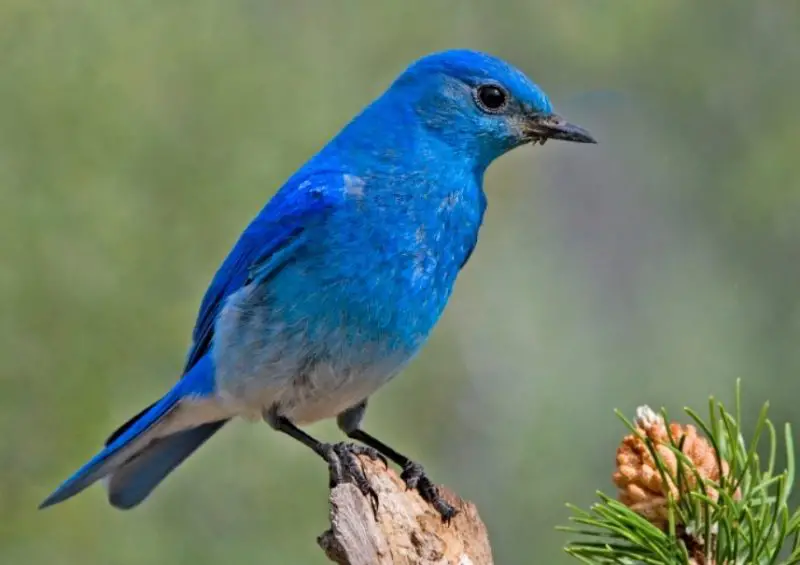
The Mountain Bluebird is a stunningly vibrant songbird with brilliant sky-blue plumage in males and a more subdued gray-blue in females. It has a slender build, long wings, and a thin bill. Unlike the Western Bluebird, it lacks any orange on the breast, giving it a cleaner, uniform appearance.
It measures about 6 to 8 inches long with a wingspan of 11 to 14 inches. Mountain Bluebirds are often seen hovering above grasslands or perched on fence posts in open country. Their soft, musical warbles and gentle “pew” calls add to their charm.
These birds feed on insects, especially beetles and grasshoppers, as well as berries during fall and winter. In Colorado, Mountain Bluebirds are commonly seen in open prairies, foothills, and montane meadows. They breed at higher elevations in spring and migrate to lower areas in winter.
Eastern Kingbird
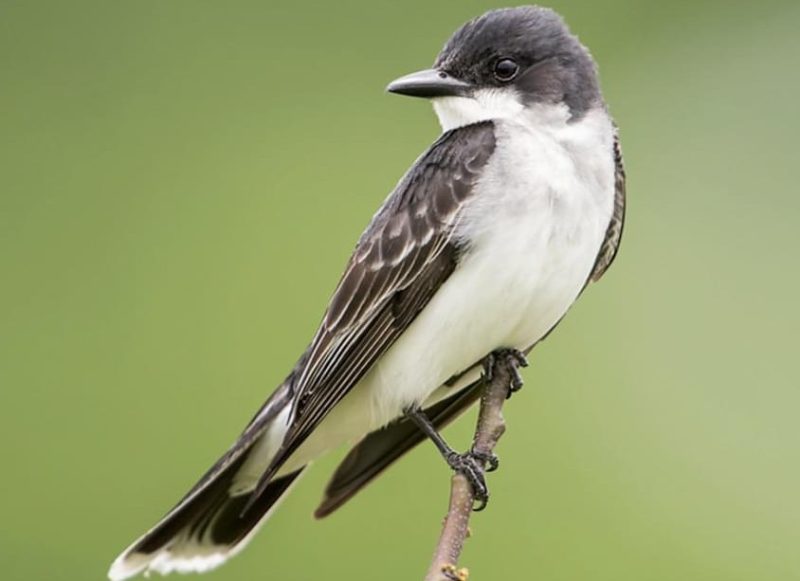
The Eastern Kingbird is a striking flycatcher with a black head, dark gray back, and bright white underparts. It has a bold white band at the tip of its black tail, which is a key identification mark. This upright, aggressive bird is known for its territorial behavior, especially during the breeding season.
Eastern Kingbirds are about 7.5 to 9 inches in length with a wingspan of 13 to 15 inches. They are often seen perching on wires or fence posts, darting out to snatch insects from the air. Their sharp, buzzing calls and quick, direct flight make them easy to recognize.
These birds feed mainly on flying insects such as bees, wasps, and beetles, and they also eat berries later in the season. In Colorado, they are summer visitors, particularly in open woodlands, riparian areas, and farmlands near water. They build cup-shaped nests in shrubs or trees and leave for Central and South America in late summer.
Common Grackle
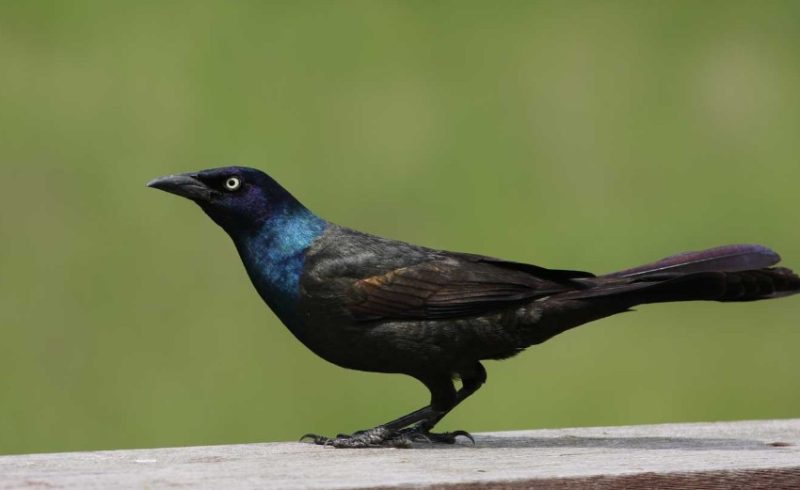
The Common Grackle is a large, glossy blackbird with iridescent plumage that shines blue, green, or purple in sunlight. It has a long tail, a sturdy black bill, and piercing yellow eyes that give it a fierce expression. Males are slightly larger and more vibrant than females, while juveniles appear duller and brownish.
Grackles measure about 11 to 13 inches in length with a wingspan of 14 to 18 inches. They often gather in noisy flocks, strutting across lawns or perching in treetops and telephone wires. Their call is a harsh, creaky “readle-eak” that stands out among other birds.
These omnivorous birds feed on insects, grains, seeds, small animals, and even garbage. In Colorado, Common Grackles are most frequently found in open fields, wetlands, suburban areas, and agricultural lands, especially during spring and summer. Some individuals remain through winter, particularly in urban areas.
Yellow-rumped Warbler
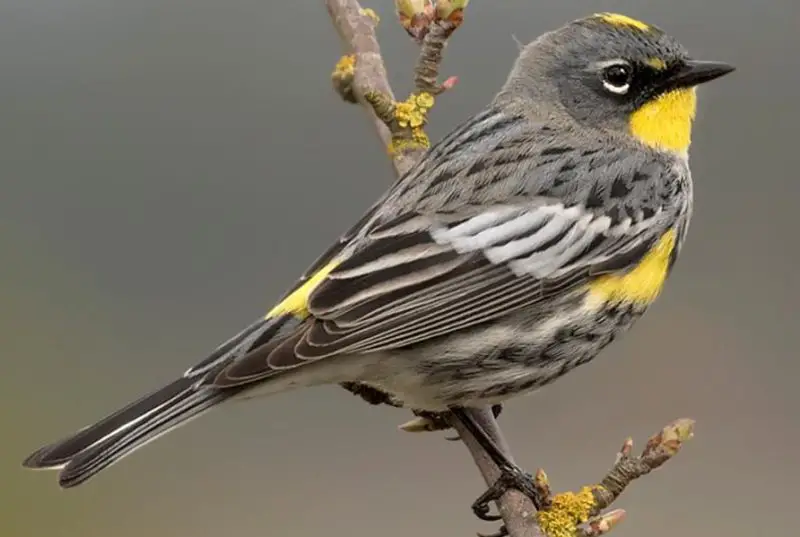
The Yellow-rumped Warbler is a small, energetic songbird easily recognized by the bright yellow patches on its rump, sides, and crown. It has a grayish back, black streaks, and white underparts, with males being more vividly marked than females. The bird’s appearance may vary slightly depending on its subspecies.
It measures about 4.5 to 6 inches in length with a wingspan of 7.5 to 9 inches. These warblers are agile and often seen flitting through trees or flying out to catch insects midair. Their musical trills and chirps add life to forest edges and thickets.
Unique among warblers, Yellow-rumped Warblers can digest waxes found in berries, allowing them to stay farther north in winter. In Colorado, they migrate through the state in spring and fall, and some overwinter in the warmer southern regions. They are often found in coniferous forests, riparian woodlands, and shrublands.
Downy Woodpecker
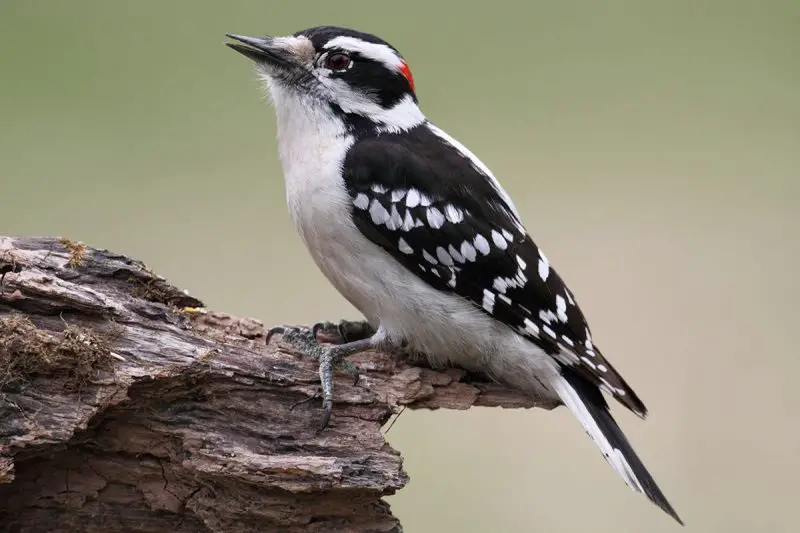
The Downy Woodpecker is the smallest woodpecker in North America and a familiar sight at feeders and wooded areas across Colorado. It has a black-and-white striped head, white underparts, and a broad white stripe down the back. Males have a small red patch on the back of the head, while females lack this marking.
It measures about 5.5 to 7 inches long with a wingspan of 9 to 12 inches. Downy Woodpeckers often cling to tree trunks and branches, tapping gently as they forage for insects. Their call is a high-pitched “pik” and a short, descending whinny.
These birds eat insects, larvae, seeds, and suet, and they often visit backyard feeders. In Colorado, Downy Woodpeckers inhabit deciduous forests, riparian zones, parks, and orchards year-round. They nest in tree cavities and are often seen in pairs or small family groups.
Hairy Woodpecker
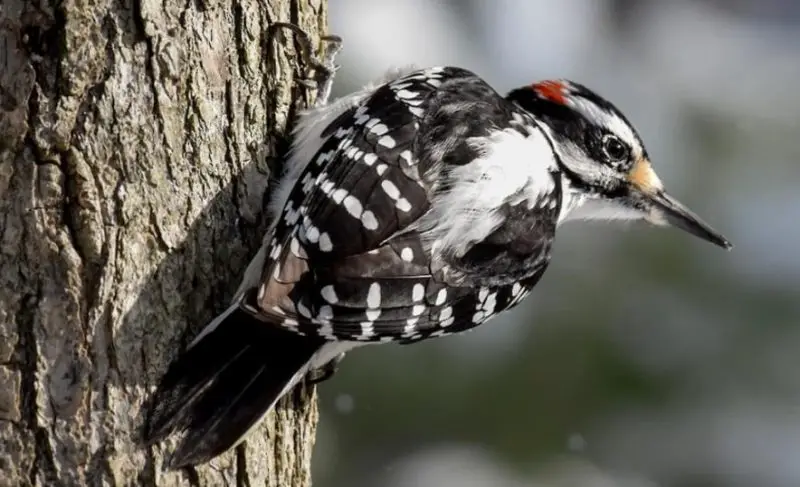
The Hairy Woodpecker closely resembles the Downy Woodpecker but is larger and has a longer, more robust bill. It has similar black-and-white plumage with a white back and facial striping, and the male also sports a red patch on the back of the head. Its clean, bold markings help differentiate it from its smaller cousin.
This woodpecker is about 8 to 10 inches long with a wingspan of 13 to 16 inches. It is often seen clinging to tree trunks, foraging for insects and larvae hidden beneath the bark. Its sharp, loud “peek” call and strong, rhythmic drumming are common in forests across the state.
Hairy Woodpeckers prefer mature forests, especially coniferous woodlands and mountain slopes. In Colorado, they are year-round residents at various elevations, particularly in wooded foothills and montane habitats. They feed on beetles, ants, caterpillars, and occasionally visit suet feeders in winter.
Northern Harrier

The Northern Harrier is a slim, medium-sized raptor with long wings and a long, narrow tail. Males are pale gray with black wingtips, while females and juveniles are brown with streaked underparts. A key field mark for all ages and sexes is the white patch on the rump, visible in flight.
They range from 18 to 20 inches in length with a wingspan of 40 to 46 inches. Harriers fly low over grasslands and marshes in a distinctive V-shaped glide, using their owl-like facial disk to detect prey by sound. Their hunting style is slow and graceful, often just feet above the ground.
Northern Harriers feed primarily on small mammals, birds, and reptiles. In Colorado, they are commonly seen in open grasslands, wetlands, and agricultural fields during migration and winter. Some breed in the northern parts of the state in undisturbed marsh habitats with dense vegetation.
Great Horned Owl
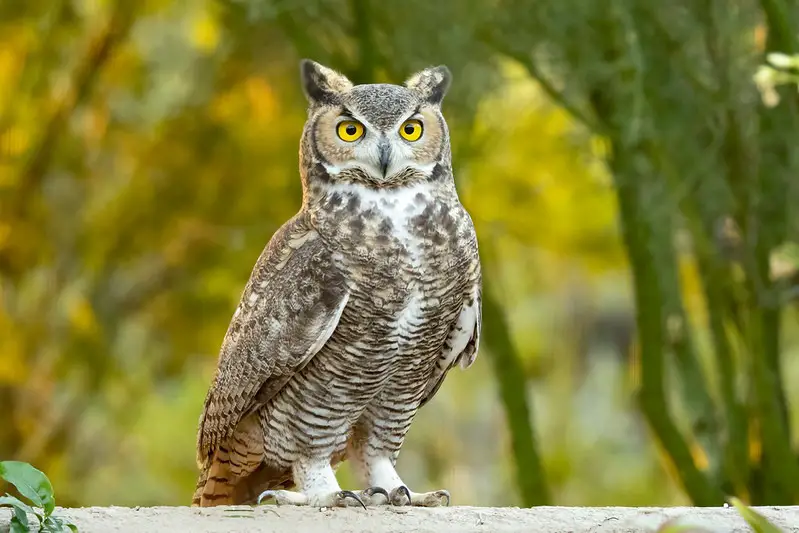
The Great Horned Owl is a powerful nocturnal predator known for its large size, deep hooting call, and prominent feather tufts or “horns” on its head. It has mottled brown and gray plumage with a white throat patch and striking yellow eyes. Its broad wings and large, rounded body give it a commanding presence in flight.
This owl measures about 18 to 25 inches in length with a wingspan of 40 to 57 inches. It is most active at night but can sometimes be seen at dusk or dawn perched in large trees. Its haunting “hoo-hoo” call is often heard echoing across forests and open landscapes throughout Colorado.
Great Horned Owls feed on a wide range of prey, including rabbits, rodents, birds, reptiles, and even skunks. In Colorado, they inhabit forests, deserts, wetlands, and urban areas alike. They nest early in the year, often taking over abandoned nests of hawks, crows, or other large birds.
Bald Eagle
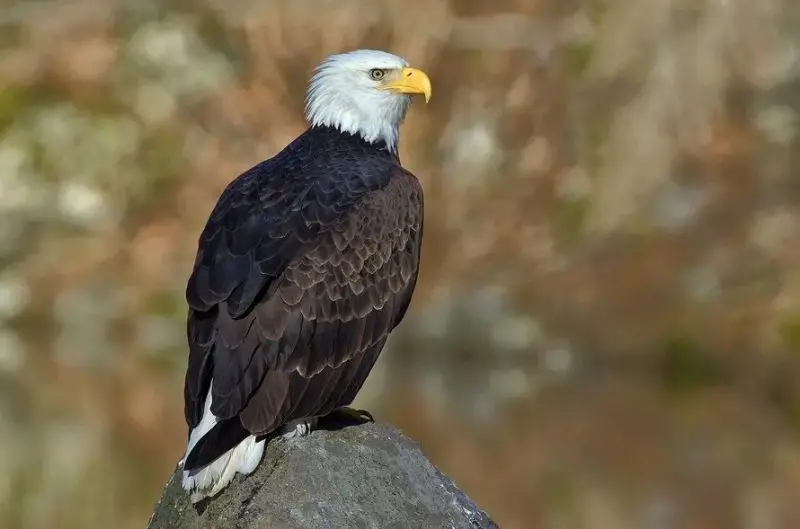
The Bald Eagle is one of the most iconic birds in North America, known for its white head and tail, dark brown body, and massive yellow beak. Immature eagles are mottled brown and white and gradually develop adult plumage by age five. Their piercing eyes and broad wings give them a majestic appearance.
They measure about 28 to 40 inches long with a wingspan ranging from 66 to 96 inches. Bald Eagles soar high in the sky or perch near water, scanning for fish and carrion. Their high-pitched, whistling calls are less imposing than their appearance suggests.
In Colorado, Bald Eagles are found year-round near lakes, rivers, and reservoirs. They feed primarily on fish but will also eat waterfowl, mammals, and carrion. They build enormous stick nests in tall trees or cliffs and are most commonly seen in the plains, foothills, and riparian corridors during winter.
Golden Eagle
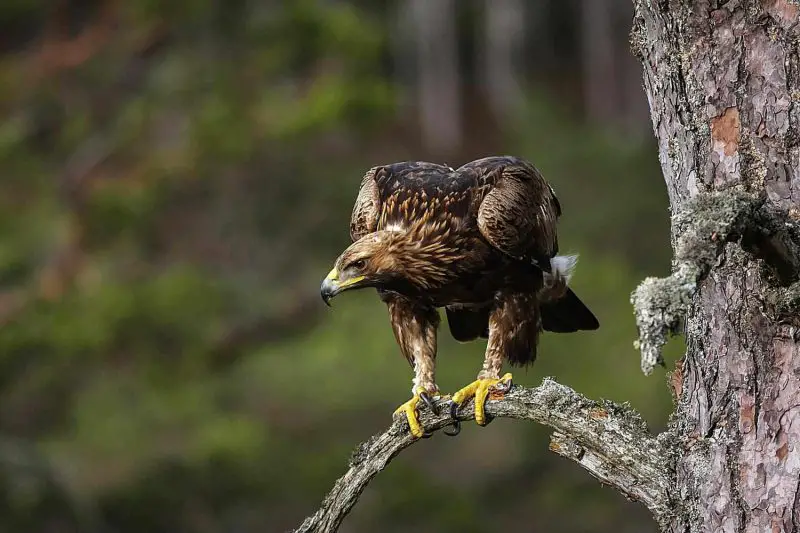
The Golden Eagle is a massive and powerful raptor with dark brown plumage and golden feathers on the back of its head and neck. It has broad wings, a strong hooked beak, and feathered legs all the way down to the feet—a feature that distinguishes it from the Bald Eagle.
Golden Eagles measure about 27 to 33 inches in length with an impressive wingspan of 72 to 86 inches. They are agile fliers, capable of fast dives and sharp turns, and are often seen soaring over mountainous terrain. Unlike the Bald Eagle, their calls are soft and rarely heard.
In Colorado, Golden Eagles prefer open habitats such as grasslands, deserts, and rugged mountains. They feed mainly on rabbits, prairie dogs, ground squirrels, and other small to medium-sized mammals. These eagles nest on cliffs or in large trees and are found year-round, especially in the western and southern parts of the state.
Canada Goose
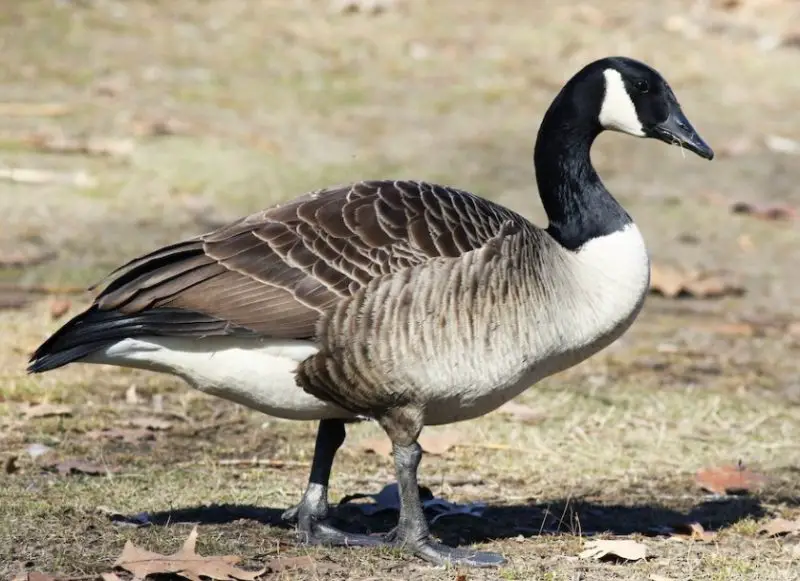
The Canada Goose is a large, familiar waterfowl easily recognized by its black head and neck, white chinstrap, and brownish body. Its long neck and honking calls make it a common sight and sound near lakes, ponds, and fields throughout Colorado. It is known for its V-shaped flying formations during migration.
They range from 29 to 43 inches in length with a wingspan of 50 to 73 inches. Canada Geese are highly social, often seen grazing in grassy areas or swimming in flocks. Their honks are loud and resonant, often heard in parks, golf courses, and wetlands.
These geese feed on grasses, grains, aquatic plants, and occasionally insects. In Colorado, many populations are year-round residents, especially in urban and suburban areas, while others migrate seasonally. They nest near water bodies and can become quite bold during the breeding season.
Mallard
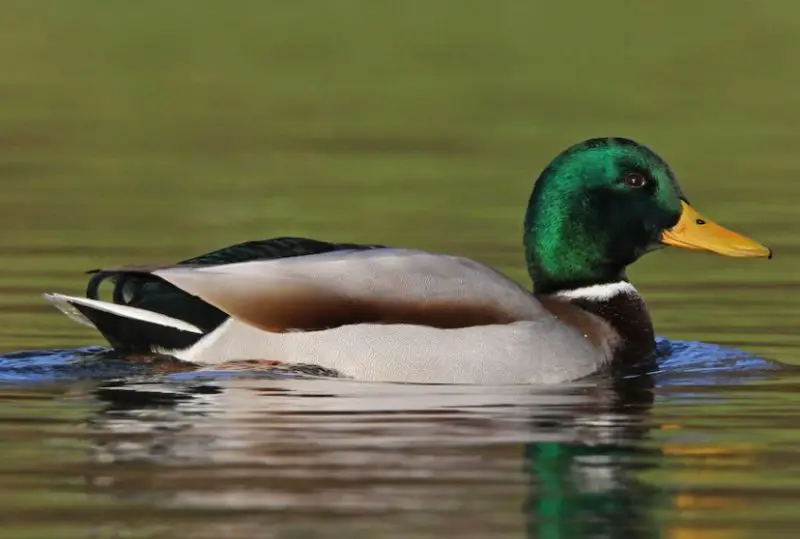
The Mallard is one of the most widespread and recognizable ducks in North America. The male, or drake, has a glossy green head, white neck ring, chestnut-brown chest, and gray body. Females are mottled brown with orange bills and a slightly paler face. Both sexes have a distinctive iridescent blue patch, or speculum, on the wings.
Mallards measure about 20 to 26 inches long with a wingspan of 32 to 39 inches. They are dabbling ducks, meaning they feed by tipping forward in the water rather than diving. Their quacks and splashy antics are common in ponds, lakes, rivers, and even roadside ditches.
They eat aquatic plants, seeds, insects, and small invertebrates. In Colorado, Mallards are found statewide in wetland habitats and are year-round residents in many areas. They are common in urban parks, marshes, and rural ponds, and are often the first duck species children learn to recognize.
Turkey Vulture

The Turkey Vulture is a large, soaring bird easily recognized by its dark brown body, broad wings with silvery undersides, and small red featherless head. It holds its wings in a shallow “V” shape while gliding and wobbles slightly in flight, helping distinguish it from other large birds overhead.
This scavenger measures about 25 to 32 inches long with a wingspan of 63 to 72 inches. Turkey Vultures rarely flap, instead relying on thermal currents to stay aloft. They have an excellent sense of smell, which they use to locate carrion, their primary food source.
In Colorado, Turkey Vultures are widespread from spring through fall, especially in open country, foothills, and along roadsides. They roost in trees or cliffs and often gather in communal groups. Most migrate south for the winter, returning in March or April.
American Kestrel
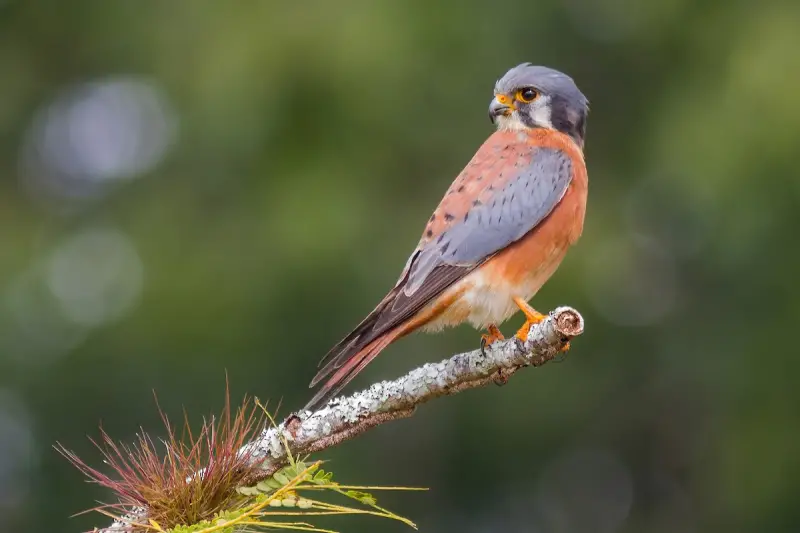
The American Kestrel is the smallest and most colorful falcon in North America. Males have a slate-blue head and wings, rust-colored back and tail, and a white belly with black spots. Females are more uniformly rusty with streaked underparts. Both sexes display two vertical black facial stripes and a hooked bill.
Kestrels are about 8 to 12 inches long with a wingspan of 20 to 24 inches. They often perch on wires or fence posts, bobbing their heads and scanning for prey. In flight, they are known for hovering in place while hunting insects, small mammals, and birds.
In Colorado, American Kestrels are common in grasslands, farmland, and open woodlands year-round. They nest in tree cavities, building crevices, or nest boxes, and are often seen in suburban and rural areas where open spaces are available.
Swainson’s Hawk
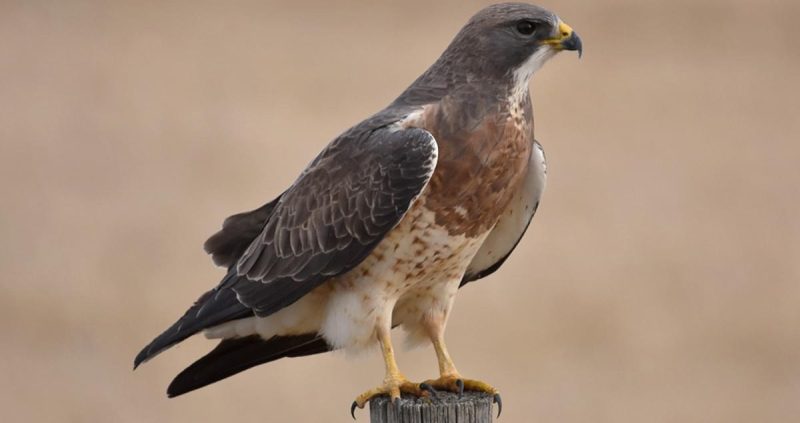
Swainson’s Hawk is a slender buteo with long pointed wings and a short tail, often seen soaring gracefully over Colorado’s open landscapes. Adults typically have a dark breast band, pale underparts, and dark flight feathers. Some individuals are much darker overall, representing a dark morph.
These hawks are around 18 to 22 inches in length with a wingspan of 48 to 56 inches. They are known for their long migrations, traveling thousands of miles to winter in South America. During the breeding season, their distinctive whistle-like calls can be heard as they circle overhead.
Swainson’s Hawks primarily feed on grasshoppers, crickets, and other large insects, but they also take rodents and small birds. In Colorado, they arrive in spring and nest in isolated trees, utility poles, or windbreaks across the plains and open country. By late summer, they gather in large groups before migrating south.
Cooper’s Hawk
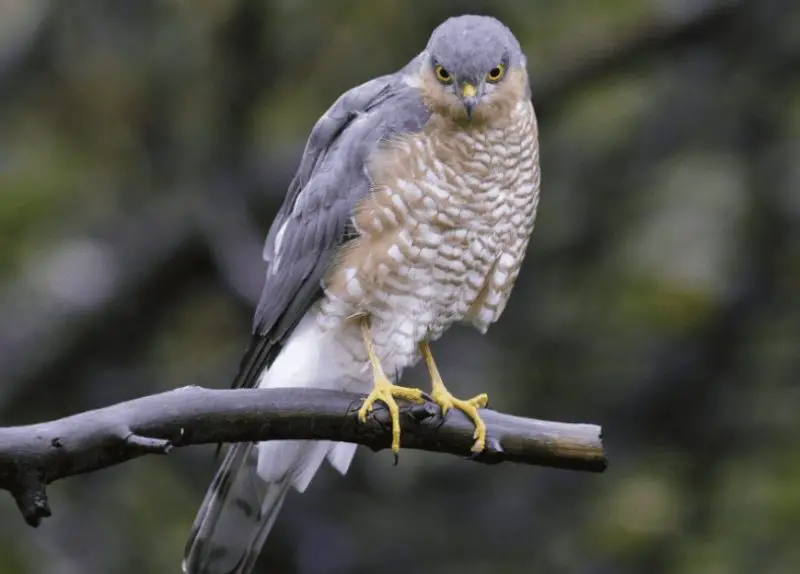
Cooper’s Hawk is a sleek, medium-sized raptor with a long, rounded tail and short, broad wings suited for fast, agile flight through trees. Adults have blue-gray backs, reddish-barred chests, and piercing red eyes. Juveniles are brown above with streaked underparts and yellow eyes.
They measure about 14 to 20 inches long with a wingspan of 24 to 35 inches. Cooper’s Hawks are secretive hunters that rely on surprise, often zipping through wooded neighborhoods or forests in pursuit of songbirds. Their high-pitched “kek-kek-kek” call is often heard near nests.
In Colorado, Cooper’s Hawks are year-round residents in woodlands, suburban parks, and residential areas with mature trees. They feed mostly on birds, including doves and robins, and sometimes small mammals. They nest in dense foliage and are increasingly common near human habitation.
Black-billed Magpie
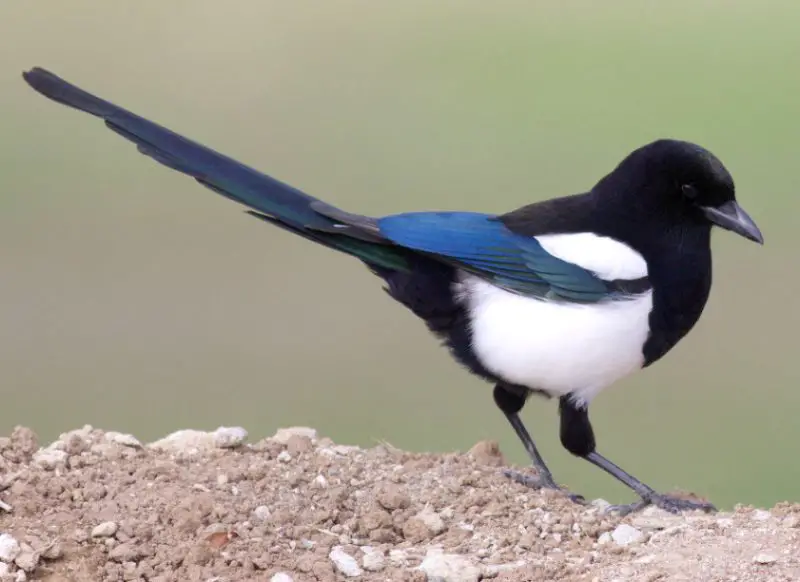
The Black-billed Magpie is a striking and intelligent bird with a long tail, glossy black-and-white plumage, and bold behavior. Its iridescent wings and tail flash blue and green in sunlight, and its sharp black bill and white shoulders make it easily recognizable.
It measures about 17 to 24 inches in length, half of which is its tail, and has a wingspan of 22 to 24 inches. Magpies are vocal, often producing a wide range of calls including harsh chatters and whistles. They are social birds frequently seen in pairs or small flocks.
In Colorado, Black-billed Magpies are common in open woodlands, grasslands, ranchlands, and even urban edges. They are omnivores, eating insects, small animals, carrion, eggs, berries, and food scraps. These birds build large, dome-shaped stick nests and are permanent residents throughout most of the state.
Cliff Swallow
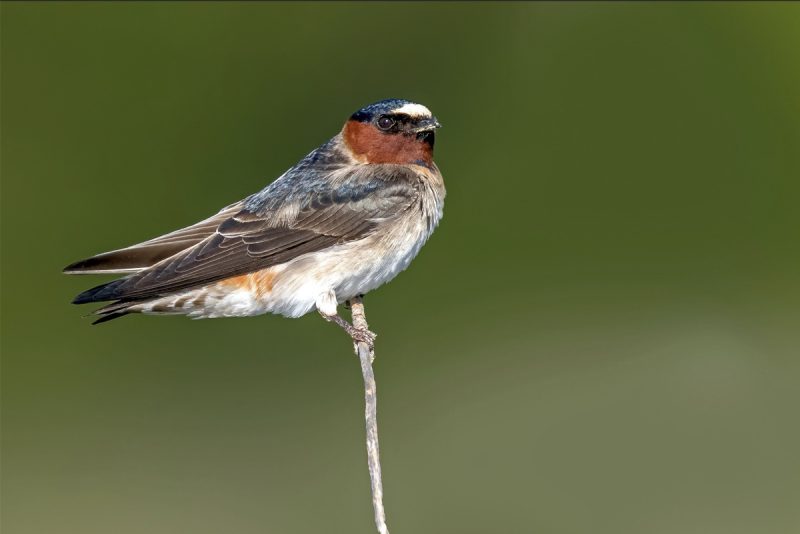
Cliff Swallows are small, social birds known for their gourd-shaped mud nests, which they build in colonies on cliffs, bridges, and buildings. Their plumage includes a dark blue back, buffy rump, pale forehead, and square tail. Their underparts are light, and the throat is a rusty color.
These birds are agile fliers, catching insects in mid-air with sharp turns and rapid wingbeats. They are highly gregarious, often foraging and nesting in large groups that provide safety in numbers. Cliff Swallows are vocal, emitting squeaky calls as they communicate with each other while flying or feeding.
They migrate in large flocks, spending summers breeding in the western and central U.S., including Colorado, and winters in South America. Open habitats near water and manmade structures are preferred nesting grounds. Their nests often appear in large clusters.
To identify a Cliff Swallow, look for its buffy rump and pale forehead patch, which distinguishes it from the similar-looking Barn Swallow. Its flight is swift and purposeful, usually accompanied by high-pitched twittering calls.
White-crowned Sparrow
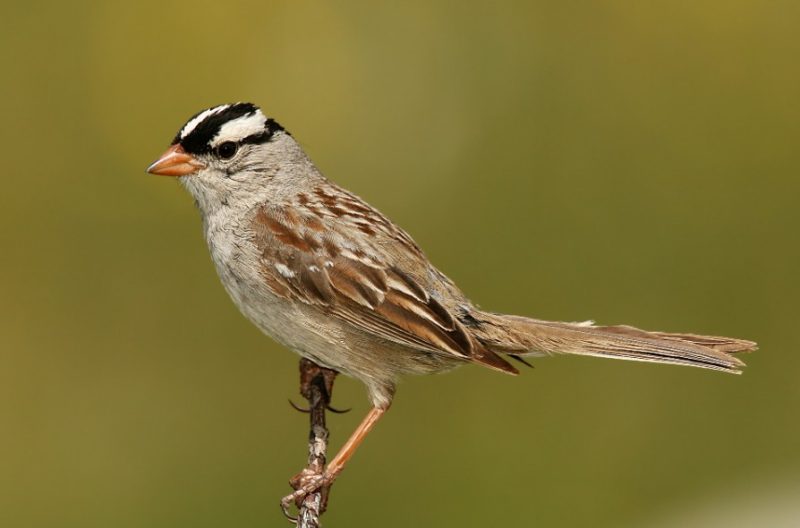
The White-crowned Sparrow is a striking songbird with bold black and white stripes on its head. Adults have grayish breasts and bellies, with a long tail and pink or yellowish bill. Juveniles feature brown head stripes instead of black.
These sparrows are known for their sweet, whistled songs, which vary regionally. Males sing to establish territory and attract mates. They forage mainly on the ground, hopping through grasses or low vegetation in search of seeds and insects.
In Colorado, they are often seen during migration and winter in open shrubby areas, weedy fields, and backyards. They breed in the tundra and northern forests and descend southward for the colder months.
To recognize a White-crowned Sparrow, focus on the striking black-and-white head pattern in adults. They are often seen scratching the ground with both feet and can be found in mixed flocks during the nonbreeding season.
Lazuli Bunting
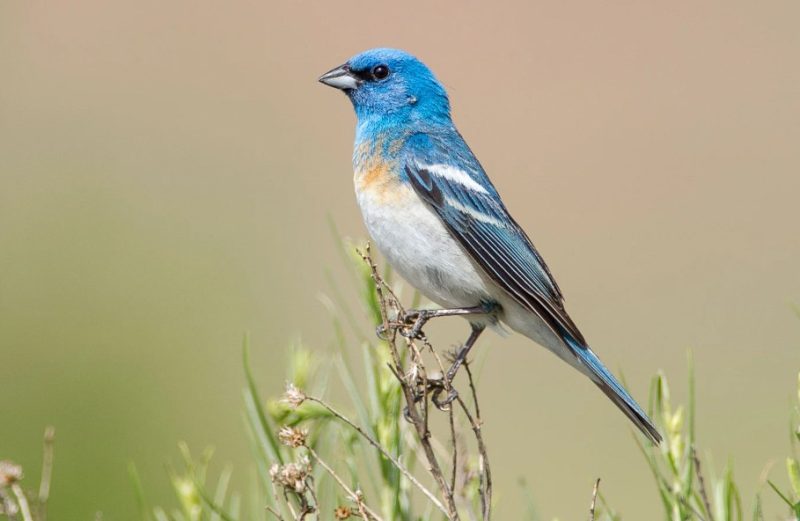
The Lazuli Bunting is a colorful songbird, with adult males boasting bright blue heads and backs, rusty orange breasts, and white bellies. Females and juveniles are much plainer, with brownish upperparts and light underparts, but still show two wing bars.
Males are especially vocal during spring and summer, singing cheerful warbling songs from exposed perches to defend their territory. These birds forage for seeds and insects, usually low in bushes or on the ground.
They are common in shrubby habitats, open woodlands, and canyon edges during the breeding season in western North America, including much of Colorado. In winter, they migrate to Mexico.
To identify a Lazuli Bunting, look for the male’s brilliant blue head and chestnut breast. Females are more subdued but still show a sweet facial expression and distinct wing bars that help distinguish them from sparrows.
Western Tanager

The Western Tanager is a stunning bird with vivid coloration. Adult males have a brilliant red head, yellow body, and black wings with white wing bars. Females and immature birds are yellow-green with grayish wings.
These tanagers forage for insects and fruit, often high in the canopy. Their calls are short, dry “pit-er-ick” notes, and their song resembles a hoarser version of a robin’s tune. They are somewhat elusive but more noticeable during spring migration.
Western Tanagers breed in coniferous and mixed forests throughout the western U.S., including the Rocky Mountains. They migrate to Central America in winter, passing through lower elevations and urban parks.
To spot a Western Tanager, listen for its sharp calls and look high in the trees for flashes of yellow and red. The male’s red head is a key feature, although it fades after the breeding season.
Steller’s Jay
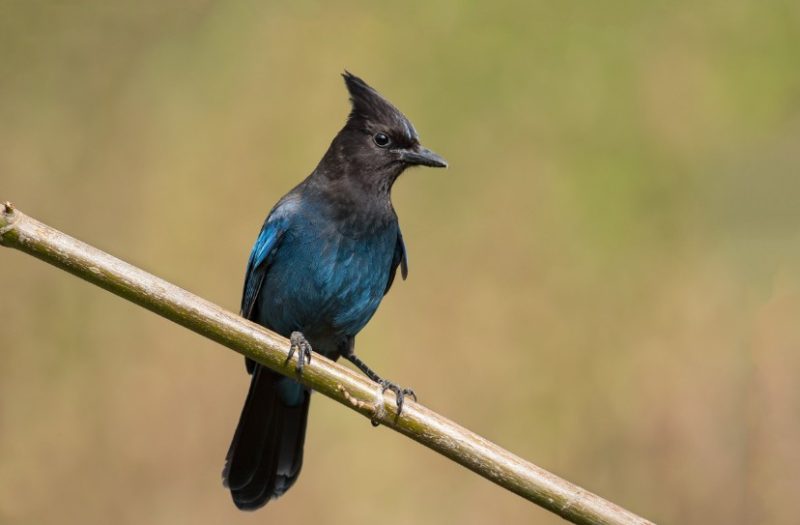
Steller’s Jay is a bold and intelligent bird with a striking appearance. It has a deep blue body, black crest, and dark head, with some individuals showing faint white eyebrow markings. The crest is often raised when excited or alarmed.
These jays are known for their harsh, scolding calls, but they can also mimic the sounds of other birds, animals, and even mechanical noises. They forage on the ground or in trees, eating nuts, seeds, insects, and occasionally small animals.
Steller’s Jays are found in coniferous forests, especially in mountainous regions of the West. In Colorado, they are common in foothill and montane areas, often visiting campsites and backyards in search of food.
To identify a Steller’s Jay, look for the prominent crest, vibrant blue plumage, and noisy behavior. They often travel in pairs or small groups and may approach people for handouts.
Pine Siskin
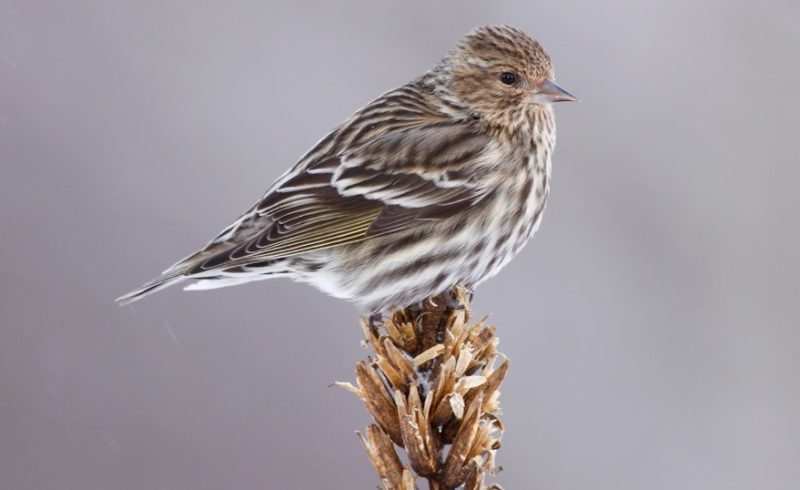
The Pine Siskin is a small, streaky finch known for its sharp, buzzy calls and erratic flight patterns. It has brown-streaked plumage with subtle yellow flashes on its wings and tail, which are most visible during flight. Its slender, pointed bill and notched tail further help with identification, especially when mixed in flocks with other finches.
This species is highly nomadic and may appear in large numbers one winter and be nearly absent the next. Pine Siskins primarily eat seeds from conifers, thistles, and sunflowers, often visiting feeders where nyjer seed is offered. They forage actively in treetops and shrubs, frequently hanging upside down to reach seeds.
In Colorado, Pine Siskins are found year-round in higher elevations, especially in coniferous forests, and they may move to lower elevations during colder months. Their breeding is closely tied to food abundance rather than a fixed season. They nest in coniferous trees, usually well-hidden among dense needles.
Cedar Waxwing
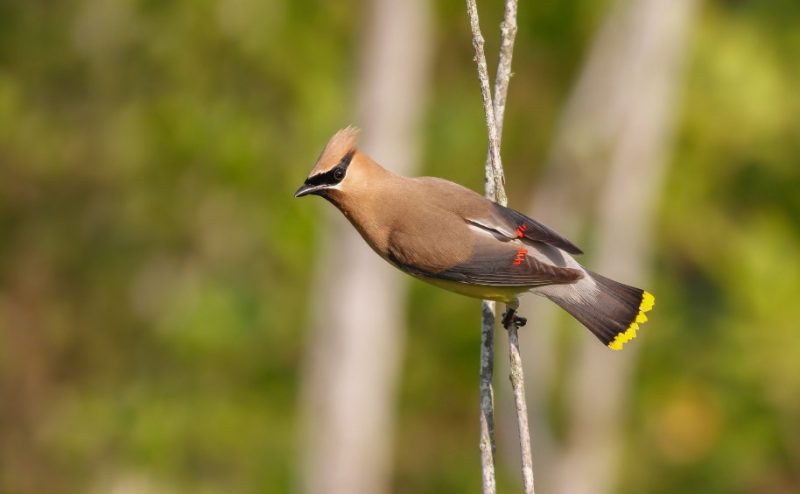
The Cedar Waxwing is a sleek, elegant songbird with a soft blend of brown, gray, and yellow plumage and a distinctive crest. It has a black mask across its face, bright red wax-like tips on its wing feathers, and a yellow-tipped tail. Its gentle, high-pitched trills are often heard before the bird is seen.
This species feeds primarily on fruit and berries, often seen in flocks flocking to serviceberries, dogwood, or juniper trees. They are also agile fliers, catching insects in midair during summer. Their feeding habits often lead them to be social and tame around humans and feeders offering fruit.
In Colorado, Cedar Waxwings are present year-round in some areas, though more common during the summer breeding season in open woodlands, riparian corridors, and urban parks. They nest in trees and shrubs, building well-camouflaged nests to raise their broods.
Northern Shrike
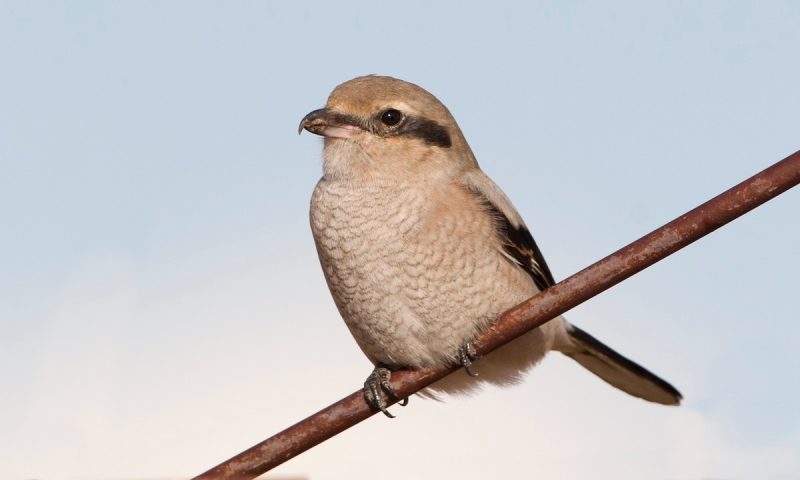
The Northern Shrike is a predatory songbird with a distinctive look and even more distinctive behavior. It has a gray body, black wings, a hooked bill, and a bold black mask. It may resemble a mockingbird at first glance, but its carnivorous nature sets it apart.
Shrikes are known for their gruesome habit of impaling prey—small birds, mammals, and insects—on thorns or barbed wire, earning them the nickname “butcher birds.” They use elevated perches to hunt and are surprisingly fierce for their size. Their song includes harsh notes mixed with melodious phrases.
In Colorado, Northern Shrikes are winter visitors to open country, especially grasslands and shrubby fields. They are solitary and territorial during this season. Their presence in an area is often marked by their impaled food caches or sudden aerial pursuits of prey.
FAQs about Common Birds in Colorado
What are some of the most common birds found in Colorado?
Colorado hosts a diverse bird population including species like the American Robin, Black-capped Chickadee, Northern Flicker, House Finch, Mourning Dove, and many more. These birds can be seen in a variety of habitats, from urban areas to forests and grasslands.
When is the best time to observe birds in Colorado?
Birdwatching is excellent year-round in Colorado, but spring and early summer are especially good for spotting breeding birds and migrants. Fall migration also offers opportunities to see species passing through the state.
Where can I go birdwatching in Colorado?
Popular birdwatching locations in Colorado include Rocky Mountain National Park, Barr Lake State Park, Monte Vista National Wildlife Refuge, and the South Platte River area. These spots offer diverse habitats that attract a wide range of bird species.
What types of habitats do common Colorado birds prefer?
Bird species in Colorado inhabit forests, grasslands, wetlands, urban parks, and mountainous areas. For example, American Robins thrive in suburban gardens, while Mountain Bluebirds prefer open meadows at higher elevations.
Are there any endangered or threatened bird species in Colorado?
Yes, some bird species in Colorado are considered threatened or endangered, such as the Piping Plover and the Mexican Spotted Owl. Conservation efforts are ongoing to protect their habitats and populations.
How can I attract common birds to my backyard in Colorado?
Providing bird feeders with seeds like sunflower or nyjer, offering fresh water sources, and planting native shrubs and trees can help attract a variety of common birds. Avoiding pesticides and creating natural shelter will also encourage birds to visit.
Do birds in Colorado migrate, and if so, when?
Many birds in Colorado migrate seasonally. Spring and fall are the primary migration periods. Species like the Swainson’s Hawk and Barn Swallow travel long distances between breeding grounds in Colorado and wintering areas in Central and South America.
What is the importance of birds in Colorado’s ecosystems?
Birds play vital roles in Colorado’s ecosystems by controlling insect populations, pollinating plants, dispersing seeds, and serving as indicators of environmental health.

